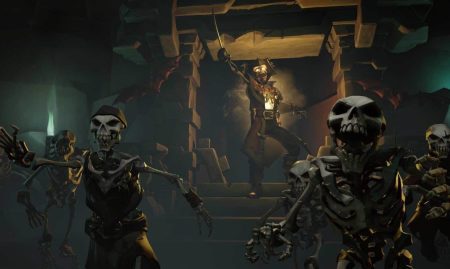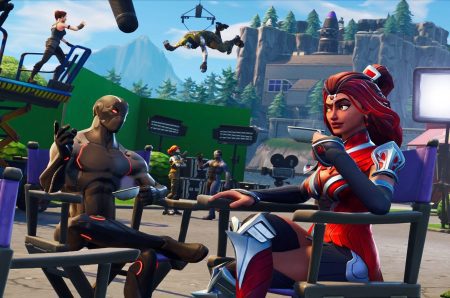Looking Back on an Impressive Year for Games
2018 has come and gone, and boy, what a year it was, for better but also most certainly for worse.
Like the years before it, what you made of 2018 depends largely on the perspective through which you choose to view it. For me, personally, it was an enjoyable year—one in which I split my time evenly between two countries, two cultures, and two languages. It was also a year in which I started a new job, forcing me to come to grips with my preconceived notions of the workforce and enter the “real world” for the very first time.
As a time to be an American, it sucked pretty badly. Sure, we got Black Panther, saw the Red Sox win their 4th World Series in 15 years, restored some semblance of checks and balance to the government, and was graced with the freakish-yet-loveable Gritty, but almost everything this past year was overshadowed by violence and vitriol, from mass shootings and racial profiling to transphobia and xenophobia.
The hatred and discrimination cannot possibly be outweighed by the “good” of 2018, but if anything worthwhile came of the year, it was pure escapism through games and entertainment at large. After a paltry 2017 that, despite its lack of quality titles, was buoyed by two truly exceptional games—The Legend of Zelda: Breath of the Wild and Super Mario Odyssey—many hoped 2018 would bring greener pastures.
It absolutely delivered. Between massive, big-budget open-world games like Red Dead Redemption 2 and Assassin’s Creed Odyssey, fantastic platformers like Celeste and Astro Bot, JRPGs galore—Ni No Kuni 2, Octopath Traveler, and Dragon Quest XI, to name a few—and far too many Metroidvanias to count, 2018 not only dwarfed 2017 in terms of quantity and scope, but also in terms of sheer quality and ambition.
There were so many good games to came out this year that it was, frankly, impossible to see and do everything; I had to pick and choose. In certain cases, that meant prioritizing some games over others, while in other cases, it meant pressing pause on an experience in order to move on to another. In this sense, there’s no way that I could have possibly come up with a comprehensive list of the best games I played this year, as I simply haven’t played enough to get a sense of what “best” truly means in 2018’s case.
That doesn’t mean I can’t share my favorites though, of which there certainly were plenty.
Rather than have a “Top X” list with a conventional number, I decided to go with a Top Nine list. A couple of thoughts behind this:
- It’s unorthodox.
- It allows me to play with how I present each game.
- I had trouble coming up with a 10th title I felt really deserved a spot here.
Setting aside the ignorance of that third reason (I’m sure I could have come up with a Top 20 had I played more), it’s that second reason that’s important to the list itself. In addition to presenting my picks as an ordered Top Nine list, I’ve also separated the nine into three tiers based on my experiences with the games. I didn’t move games around to fit these tiers, mind you; they all simply fell into place like this, luckily.
Anyways, enough of the logistics. Let’s dive in.
Tier 3 — The VR Holy Trinity
As backlogged as I’ve become this year, I picked up a PSVR headset and some Move controllers as part of a Black Friday sale in a conscious effort to try out as many of the VR games that I’d missed on Sony’s platform till now as I could. To my surprise, I ended the year with not just one hallmark 2018 PSVR title, but three.
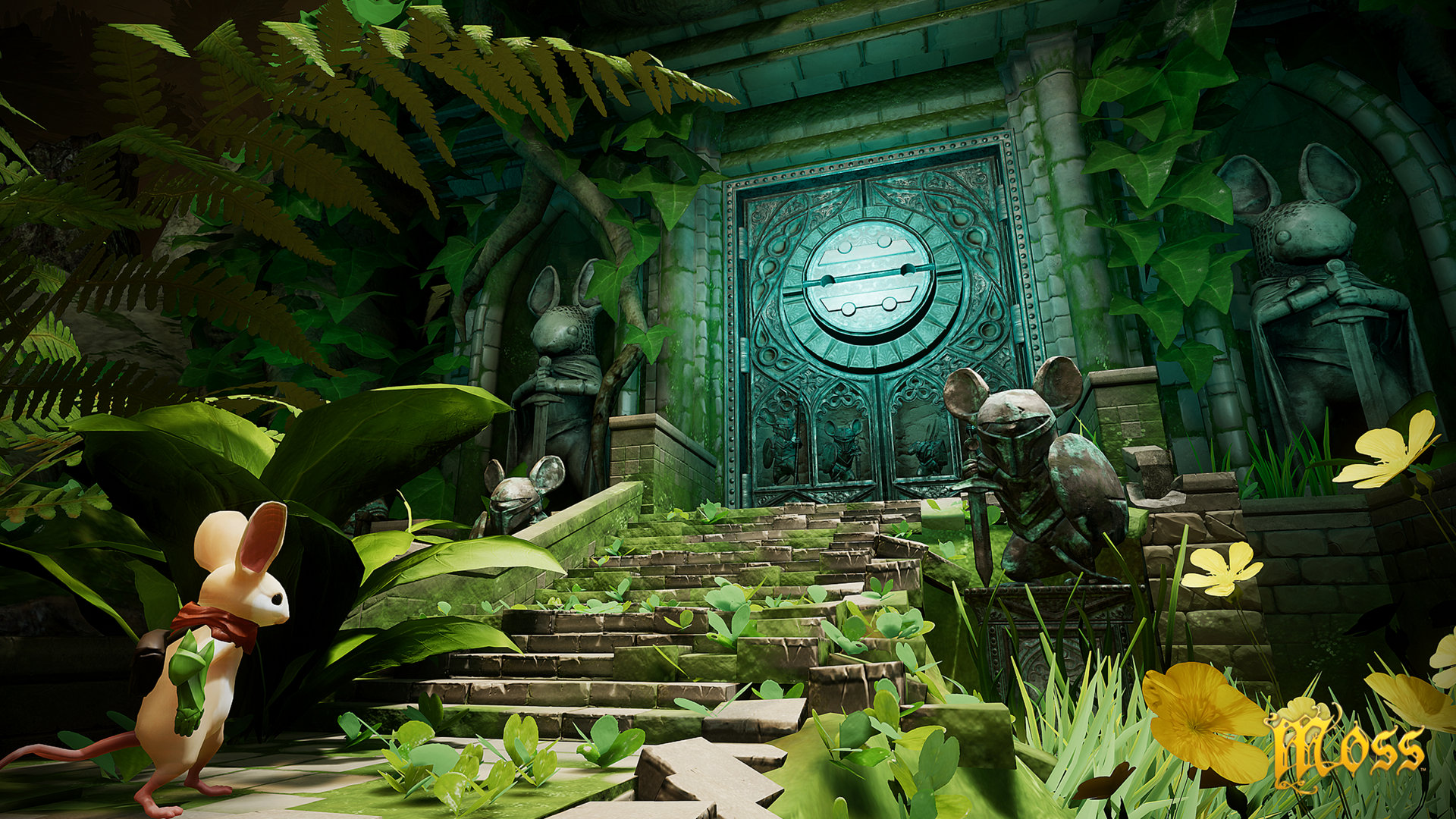
9) Moss
Moss feels like the game The Last Guardian should have been. It retains the mystical, majestic feeling of exploring an ancient world and solving its puzzles—complete with a story of two companions befriending one another and working together to progress—without all the technical mayhem and framerate issues.
Whereas The Last Guardian relied heavily on complex AI to sell the relationship between the player’s character and Trico, Moss takes a much simpler route. The player assumes the role of two characters—a mouse named Quill and the “Reader,” representing the player—with the player using the joystick and face buttons to control the former and using the VR headset and DS4 light bar to act as the latter.
Without the unpredictability of AI to hinder it (as much as I understood the decision to make Trico disobedient at TLG’s outset, it didn’t exactly make for compelling gameplay), Moss surprised me as both a satisfying adventure game and a touching narrative. Its story is well told, thanks in large part to a skilled narrator, while its smaller moments (defending Quill from hostile enemies, dragging a moveable block to give her a foothold, giving her a motion-controlled high five at the end of a particularly lengthy puzzle) have a surprising emotional tenderness to them.
It’s by no means the most inventive thing out there in terms of its puzzles or combat, but Moss is a solid game and a particularly novel experience for PSVR.

8) Astro Bot Rescue Mission
While we’re sticking with the comparisons for a second, there’s an awful lot of great things in common between Studio Japan’s Astro Bot Rescue Mission and the 3D Super Mario games—especially 2017’s superb Super Mario Odyssey. Like Odyssey, Astro Bot is a lighthearted platformer that has the player exploring a myriad of unique environments. From city catwalks to moody mines, each level of Astro Bot is a wondrous new environment waiting to be explored.
It’s not as open as a sandbox game like Odyssey. Levels are linear in nature, and the game doesn’t let players move backwards once the camera has advanced (likely to avoid PSVR having to track players looking behind themselves). However, that doesn’t keep Astro Bot from being stuffed with secrets, from each level’s eight collectible robots—the game’s take on Odyssey’s moons and Super Mario 64’s stars—to invisible chameleons, hidden in plain sight, that requires the player to look at them for several seconds before they reveal themselves.
The levels are a joy to explore, and PSVR brings a whole new element to the mix, requiring players to play with perspective to find pathways and collectibles that are just out of view. It feels like playing another iconic Super Mario platformer—Super Mario 3D Land—except with the added immersion of playing in virtual reality. And while the main campaign is on the easy side compared to its Super Mario inspirations, additional challenge levels—unlocked by collecting the aforementioned chameleons—ensure an added layer of difficulty for those looking to seek them out.
Quirky and charming, Astro Bot is a winner for Sony’s console this past year. It’s a shame that PSVR still hasn’t really caught on; otherwise, far more people would have been talking about this heartwarming little gem.
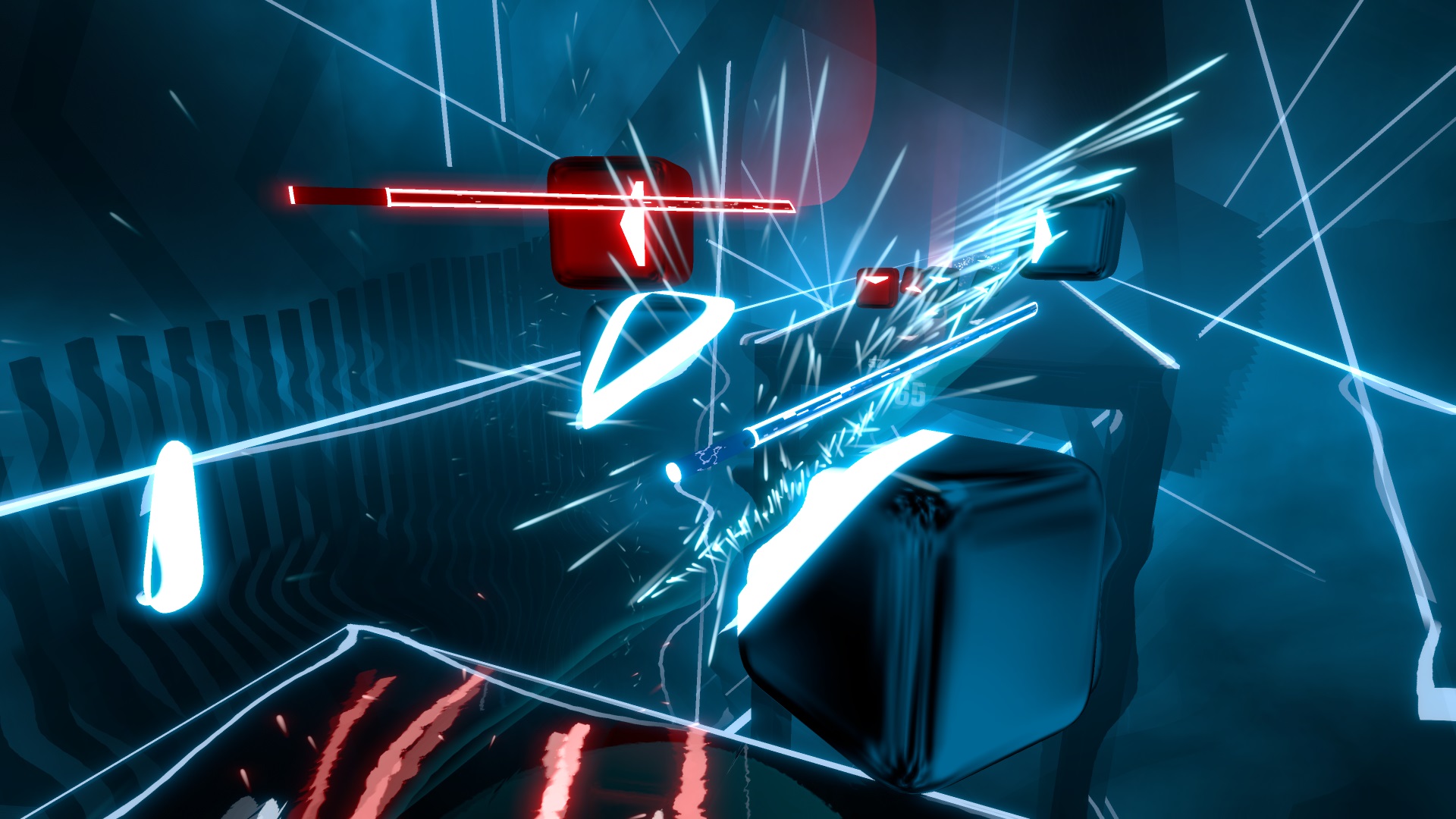
7) Beat Saber
Beat Saber is, simply put, incredible. A cross between a music & rhythm game and Star Wars, Beat Saber cleverly iterates on what I and many had considered a tired genre, simultaneously providing PSVR with a true killer app.
Much like series such as Guitar Hero and Rock Band, Beat Saber let’s players jam out to tunes while testing their reflexes and physical dexterity. Unlike the traditional premise of hitting buttons in time with oncoming colored notes, however, Beat Saber ups the ante, having players slice through flying blocks, both in time with the music and in specific directions, all while bobbing and weaving to avoid streak-ending walls and ceilings.
The gameplay is fast, frenetic, and addicting beyond belief. Swinging around your two sabers—one red and one blue, by default—feels like something straight out of a Star Wars battle. Meanwhile, the game’s breakneck pace constantly keeps you on your toes; expect to break a sweat when playing for an extended period of time. Though the limitations of PSVR could have easily derailed the experience, surprisingly good motion tracking allows the action to feel challenging without ever being frustrating.
Beat Saber also eschews featuring a long list of popular radio hits in favor of a smaller selection of obscure, indie EDM tracks. At first, I was concerned that the limited song list would cause the game to become repetitive over time. However, a fleshed out singleplayer that gradually ramps up the difficulty—complete with crazy modifiers like instafail, disappearing arrow indicators, and minimum required note streaks—ensured that things never got stale.
Play it solo; play it with friends. No matter how you slice it (see what I did there?), Beat Saber is a must own for fans of music games and those looking for, quite possibly, the best PSVR game to date.
Plus, it has “Pop/Stars” by K/DA. Need I say more?
Tier 2 — The Tried and True
Through 2018 was unquestionably a year of great innovation for games, three of my favorite experiences of the past 12 months were based on games of yesteryear. Old franchises, old faces; gaming comfort food, if you will. Though these games didn’t set a bold new precedent for games, that didn’t stop them from being fun, nor did it make their particular achievements any less impressive.

6) Marvel’s Spider-Man
When I first learned that Insomniac would be picking up the Spider-Man mantle for Sony’s then-upcoming PlayStation 4 exclusive, I didn’t know what to expect. After hearing endless rumors that Sucker Punch—developer of the Infamous franchise—would be heading the game, any other studio felt like a step down in comparison. It just seemed like Sucker Punch would be a perfect fit for the Manhattan web-slinger.
Fast forward to the beginning of November 2018. Marvel’s Spider-Man has been out for close to a month. I’ve platinumed the game, unlocked every outfit, scoured New York for every landmark, every mission, every new challenge… I’ve left nothing unturned.
Marvel’s Spider-Man was gripping enough of an experience to keep me locked in for weeks on end, and did so even despite my early skepticism when it came to Insomniac crafting a compelling open-world game. Its story was well told, with characters that were interesting and multi-layered; the game was gorgeous (especially during the day segments); and its combat was challenging and rewarding.
Was it perfect? Hell, no. The boss fights were weak, the stealth gameplay was undercooked—especially when you compare it to the stealth found in the Arkham series—and the crime missions were some of the most monotonous gameplay segments I’d played all year. Heck, you could make an argument that it’s not even the best Spider-Man property to release in 2018 (many will reserve that honor for Into the Spiderverse). Regardless of its flaws, however, Marvel’s Spider-Man got me excited about playing as Peter Parker for the first time since 2004’s Spider-Man 2 (a banger in its own right).
After over a decade of playing as the Caped Crusader, it feels good to make room for our Friendly Neighborhood web-head for once.
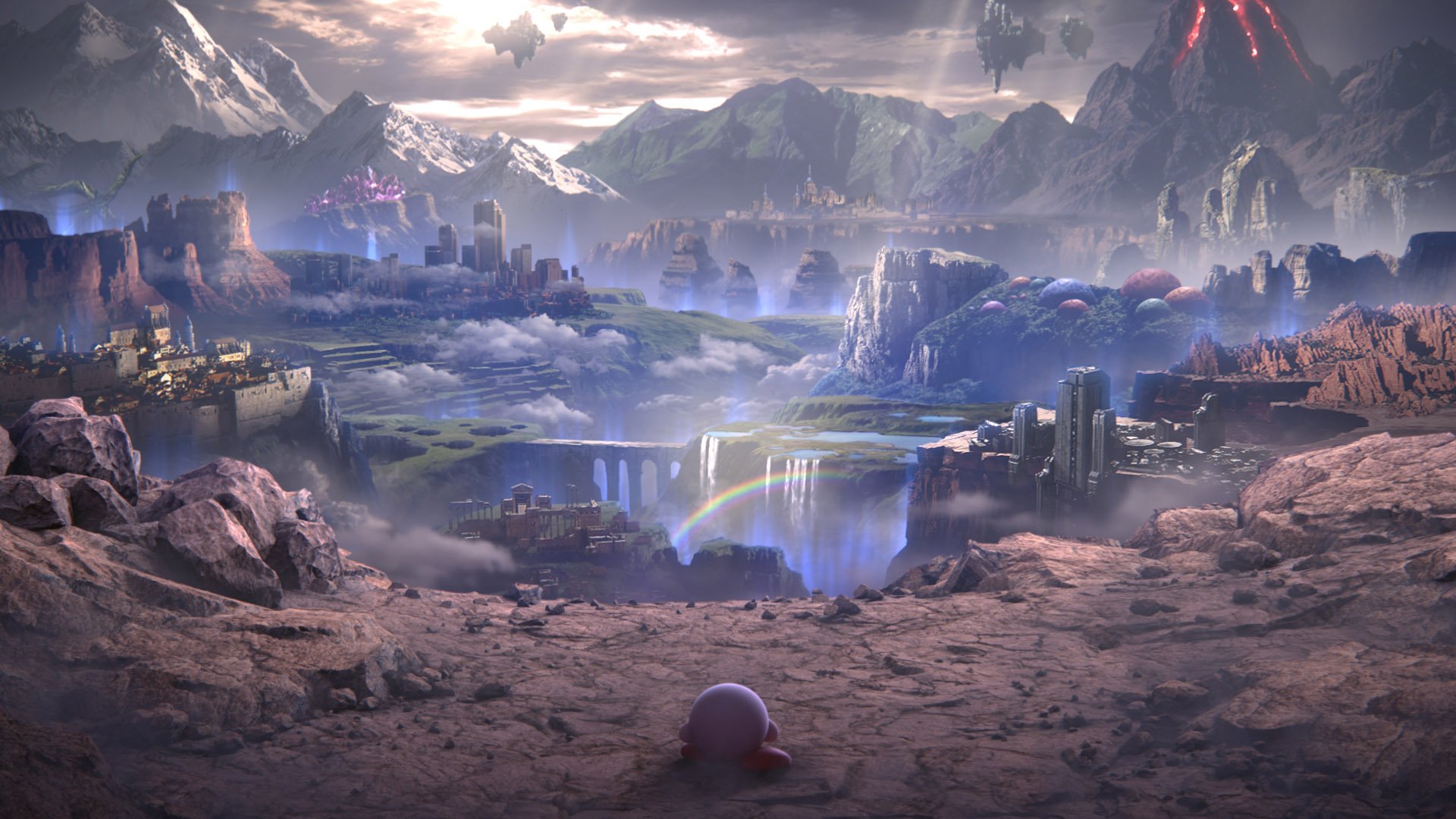
5) Super Smash Bros. Ultimate
The more I play Super Smash Bros. Ultimate, the more I love it.
Like anybody who’s ever owned a Nintendo console (or played one at a friend’s house), I’m a huge Smash Bros. fan. I’m not a fanatic — I enjoy watching the occasional EVO match, but I’m not playing Melee on CRT screens as Fox on Final Destination — but I’m a big fan.
Even still, I never expected to like Ultimate as much as I currently do. Every aspect of this game, from its satisfying, customizable local battles, to its addicting Spirits Board, to its epic World of Light mode, is top-notch. Hell, even the online, which was a total trash heap at launch, has since improved greatly; I hop on several nights a week now, in the hopes of raising my GSP to the 3.5+ million currently needed to get Ganondorf to Elite Smash (I’m hovering at around 3.2).
Speaking of Ganondorf, it’s amazing how small tweaks to the Smash formula have made old characters feel fresh again in Ultimate. Ganondorf receiving an overhaul of his smash attacks is likely one of the biggest changes to an individual character’s moveset, but there’s also Luigi’s poltergeist, Link’s remote bombs, and even… (sobbing) Shulk’s new, lightning-fast Monado Arts selector. The game may have added several newcomers to the list, with more — Joker! — coming in the near future, but it’s Ultimate’s commitment to bringing every veteran back, and in their best forms to date, even, that makes the game so special.
Plus, Nintendo brought the absolute greatest character of all to the gates of smash: Kyle Hyde. He’s witty, he’s nimble, he’s– wait, he’s not playable? What’s that– he doesn’t even have a character model? Whatever, he’s a spirit, he’s in the game, and you can fight and recruit him– I don’t care if he’s a sparkly JPEG.
In any case, I’ve put nearly 70 hours into Ultimate since launch, and I show no signs of stopping. If that isn’t a sign of a damn fine game, then I don’t know what is.
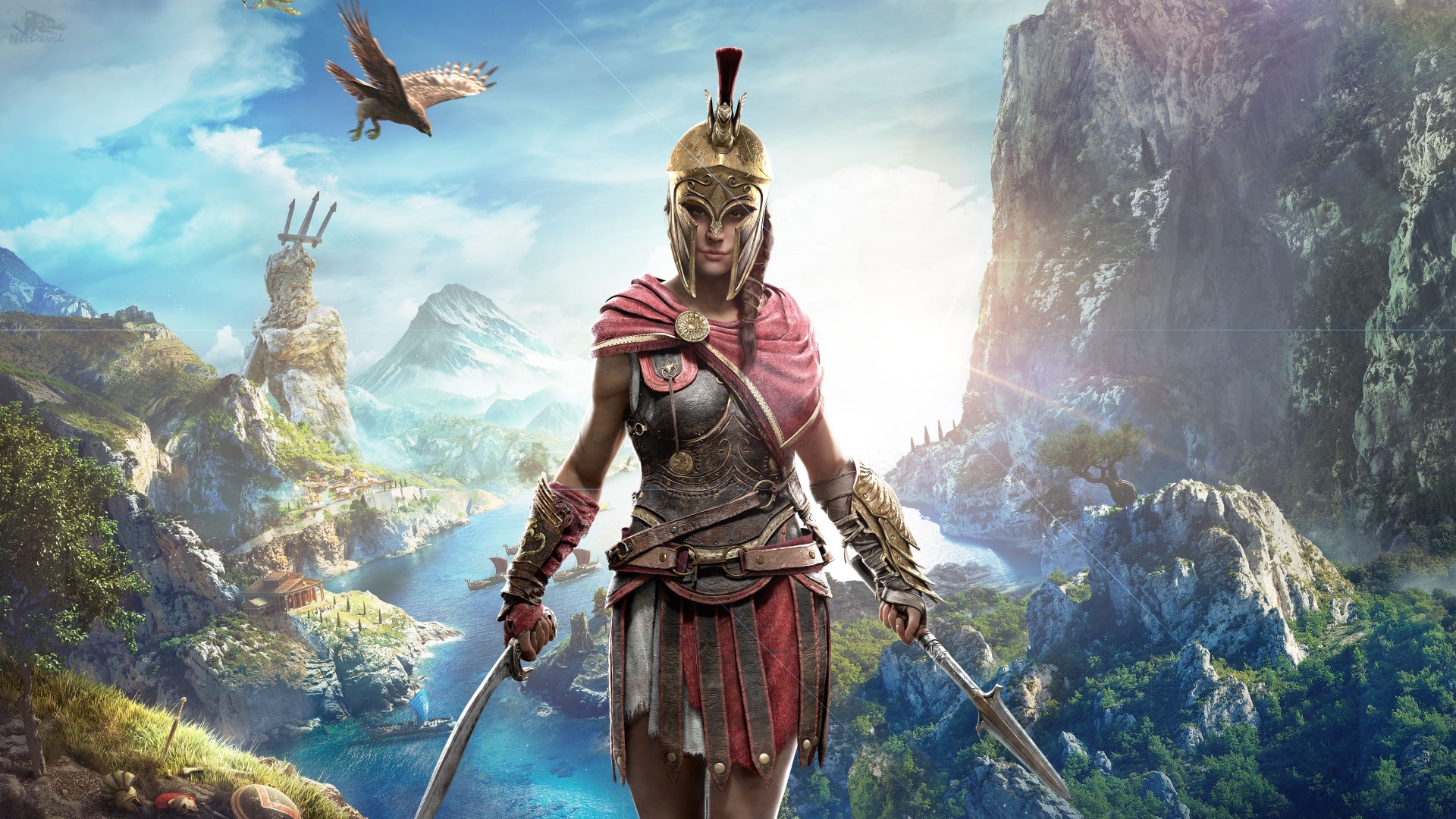
4) Assassin’s Creed Odyssey
As much time as I’ve sunk into Ultimate, I have a feeling I’ll sink even more hours into Assassin’s Creed Odyssey. (Okay, that’s a blatant lie, since I’m a regular host of Smash matches at my house, but let’s roll with the comparison, at least when it comes to the single-player components.)
Assassin’s Creed Odyssey is the antithesis to another massive 2018 open-world game, Red Dead Redemption 2. Unlike Red Dead, with its slow animations and sluggish navigation, Odyssey is fast-paced and easy to explore. Looting is instantaneous (there’s literally no animation for it). You can set your horse to autopilot and have it make a beeline to your next waypoint. Bounties can be paid off from the map screen, for God’s sake.
All of this might seem immersion breaking, and in a way, it is. Again, Odyssey is no Red Dead. But the ability to pick up a massive 60-plus-hour RPG and feel like it’ll always respect my time, even if all I’m investing in it is an hour a day… that’s something to be celebrated.
Of course, great pacing isn’t the only reason why I love Assassin’s Creed Odyssey. Its world is massive and colorful, its combat and stealth elements complement each other nicely, naval combat is as satisfying as it had ever been, and Kassandra makes for a fantastic protagonist (sorry, Alexios who?). Oh, and the mercenaries system is an excellent riff off of Warner Bros.’s Shadow of Mordor, without feeling like a complete copy-and-paste. Oh, oh, and you can dive underwater and explore caverns and upgrade weapons and unlock new skills and recruit lieutenants for your ship and… well, I think you get it.
Tier 1 — The Revolutionaries
As innovative as PSVR felt, and as finely honed as our franchise staples were, in 2018 the true movers and shakers were the games that went above and beyond to provide something new for gamers. Blurring the line between cinema and interactive media. Melding storytelling and gameplay together in a novel and heartfelt way. Providing a world larger and more detailed than we’ve seen before. Each of the next three games successfully iterated on one of these three objectives, surprising us, delighting us, and causing us to reevaluate just what makes video games so compelling in the first place.
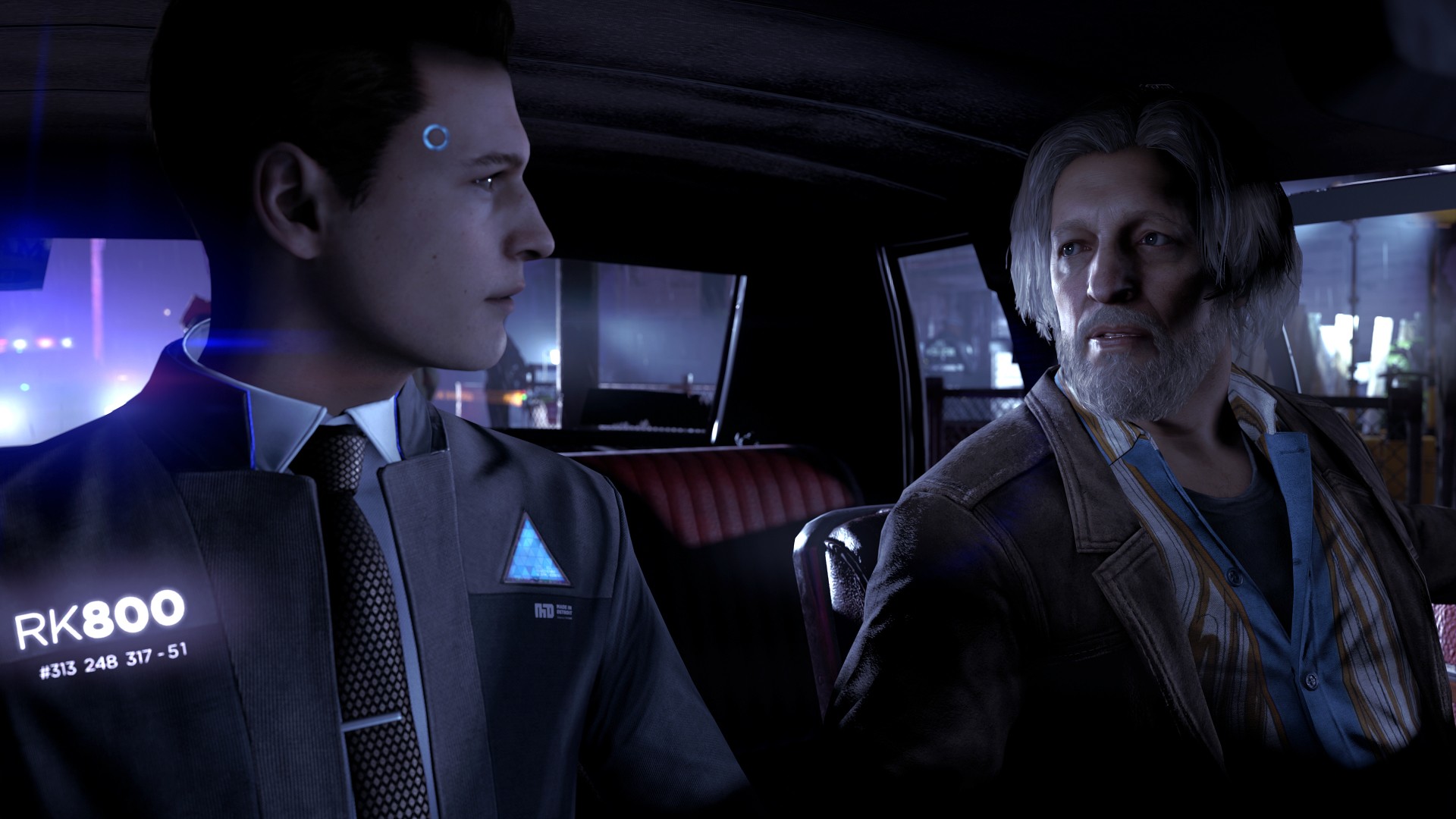
3) Detroit: Become Human
It’s a shame that Quantic Dream ended up being a disgusting source of harassment and general misconduct because, despite your feelings toward the studio, its leadership, and David Cage, the developer actually put out a fantastic game in the form of Detroit: Become Human.
Detroit weaves an interesting “what if?” narrative, introducing a near future where human-like androids live among us. They do our shopping. They care for our elderly. They act as our partners. Androids have become an everyday aspect of human life, much to the objection of many Americans, who have lost their jobs to the humanoid machines.
Detroit’s premise sets up an interesting moral dilemma: “Is artificial intelligence capable of feeling? Regardless of whether they can or cannot, shouldn’t they be treated as such?” The question is deeply steeped in civil rights, and Detroit pushes hard to have players experience the various forms of discrimination androids are subjected to on a daily basis.
Detroit accomplishes this by having players control three different androids, each with their own unique circumstances that ensnare them in an ongoing conflict in the city of Detroit. There’s Connor, a by-the-book police detective that has yet to fully grasp the humanity of his fellow androids. There’s Kara, a servant that escapes a home plagued by domestic violence in order to protect a young girl. Finally, there’s Markus, a caregiver for a human who teaches him the meaning of free will.
These characters are fascinating lenses into the world of Detroit, and their supporting casts are filled with nuanced personas that successfully break the cookie-cutter mold that hinders other story-based games. While there are certainly heroes and villains in Detroit, far more frequent are flawed characters that hold redeemable qualities. The people of Detroit are not a monolith, nor is their struggle a simple one. Detroit: Become Human handles this gracefully with its storytelling, crafting a narrative that is at times joyful, at times distressing, but always entertaining.
People would say that we still have a ways to go before video games are considered narrative heavyweights that can take on films and literature. I’d argue that games like Detroit prove we’re already there.
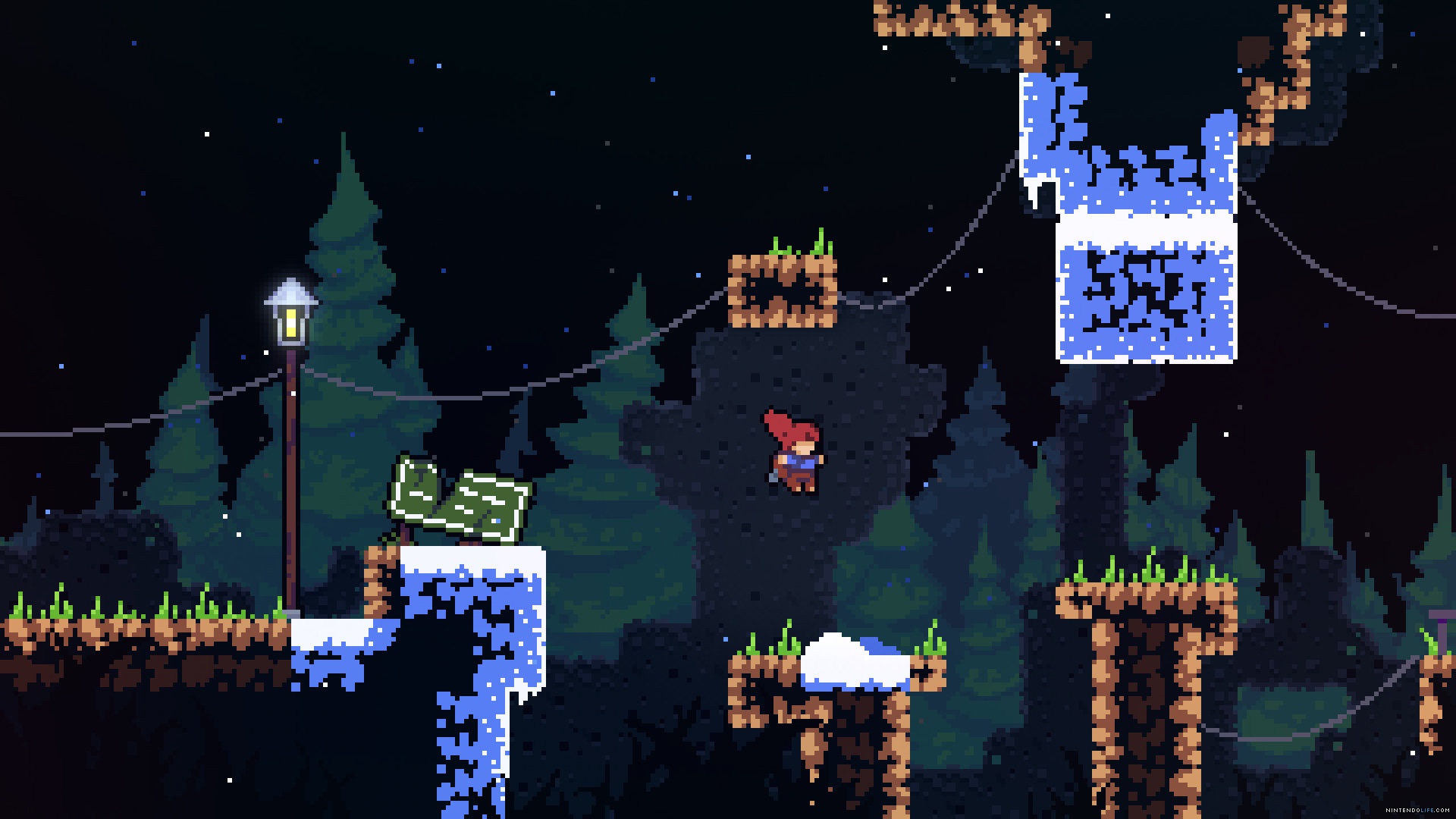
2) Celeste
At this point, what about Celeste have you not already heard?
Celeste is a phenomenal platformer that mixes tough-as-nails gameplay with an emotional story about mental health and overcoming one’s demons. The game doesn’t pull its punches in either domain. Each level is filled with spikes, moving blocks, and pitfalls that’ll have your death count skyrocketing easily into the thousands by the time you reach the closing credits. At the same time, the game’s dialogue is succinct in its delivery and sharp in its messaging: Climbing a mountain is hard. Overcoming your anxiety is fucking hard.
And yet, the game melds its gameplay and its story together in such a way that elevates the experience beyond being “hard just for the sake of it.” Death is frequent and instantaneous, but so is respawning. Levels are challenging, but the game never punishes you for failure. Instead, you try, you fail, you get better, and you try again. Yes, climbing the mountain, overcoming your fears, and making peace with your personal weaknesses are all difficult endeavors, but they’re doable with hard work, introspection, and just a little bit of faith.
Celeste never loses sight of this ideal, and its gameplay and story are better off because of it. In a year filled with big-budget games and massive worlds, it’s refreshing to play a small indie with a huge heart and such an important message. If you haven’t played it yet, you owe it to yourself to do so.
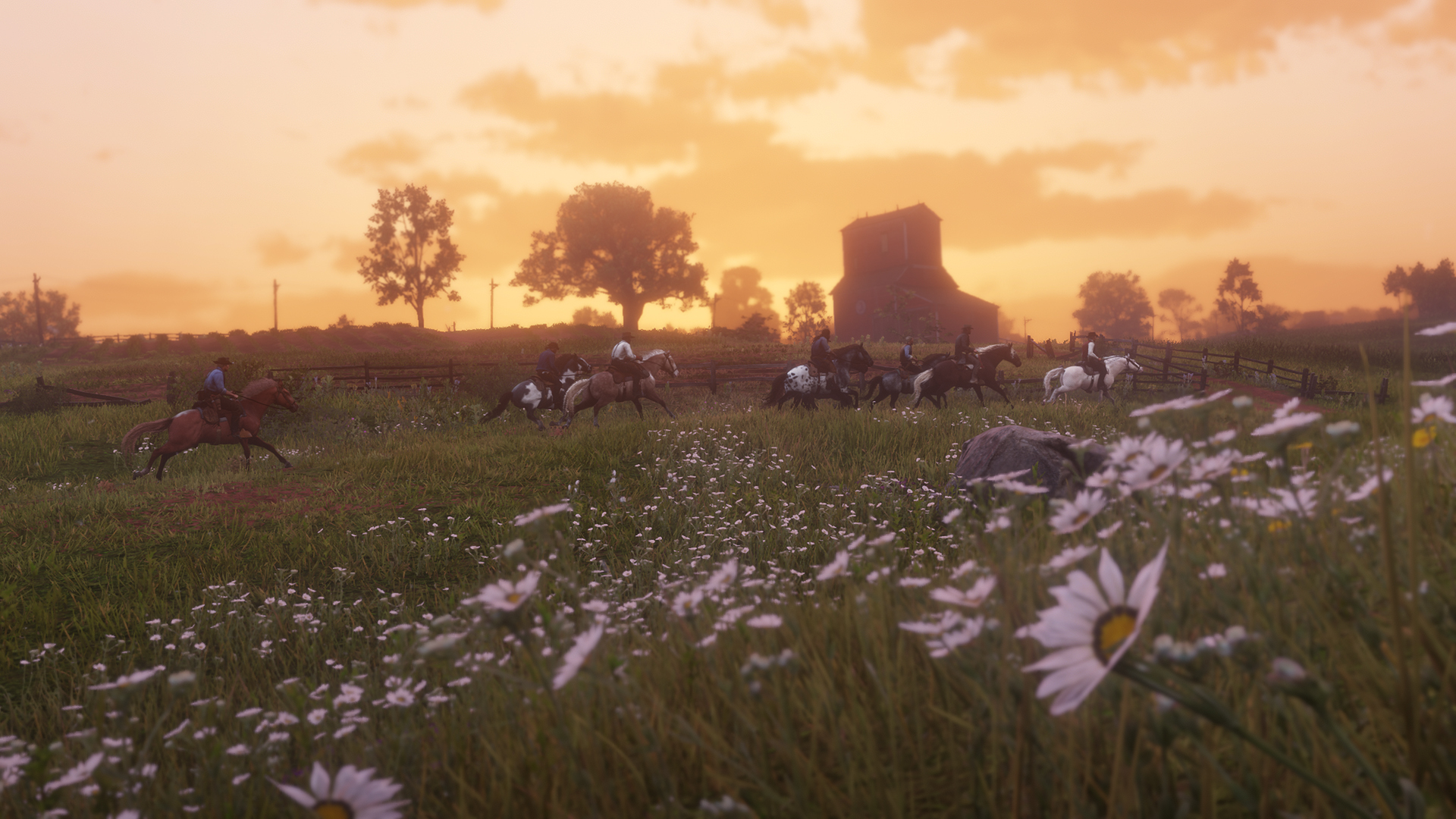
1) Red Dead Redemption 2
In spite of its flaws, in spite of its jank, in spite of the troubling workplace culture that brought it to us, Red Dead Redemption 2 stood tall as undoubtedly the best game I played this year.
Many will pick from a crop of numerous other titles for their GOTY selections. God of War, though I have issues with it, is a stunning revamp of a franchise that was in desperate need of one. Super Smash Bros. Ultimate is bound to captivate audiences, competitors, and commentators for years to come. And Celeste… well, Celeste is simply incredible, period. But today, from me at least, the honor goes to Rockstar’s latest open-world title.
From its gorgeous aesthetic to its mellow soundtrack, from its wide range of wild life to its varied missions and quirky characters, from its impressive settlements to its sprawling landscape, Red Dead 2 offered a world more compelling than most I’ve played in recent memory, if not ever. Its controls and shooting mechanics can be archaic at times, and it still bewilders me as to why Rockstar can never get a cover system right in its games, but Red Dead 2 provided a sense of immersion and setting that managed to overcome any and all reservations I may have had about the game and its smaller systems.
The result is a game that rises far above the sum of its individual parts, and one that I imagine I will be revisiting again and again for quite some time into the future. It may have been a sequel to an already cherished game, but that doesn’t make Red Dead 2 any less groundbreaking of a release, nor does it give me pause when I say, wholeheartedly, that it was the very best game I played in 2018.
Love it, hate it, or haven’t played it, it’s difficult to discount the importance of Red Dead 2, for better or for worse, as it pertains to gaming in general. Games have plenty to learn from it, even if Rockstar as a employer has plenty to learn from other developers, and I look forward to seeing what the future brings in the coming years because of it.
A Shoutout to all the Other Great 2018 Games
And that’s it! Phew.
To reiterate, there are plenty of phenomenal games I missed in 2018 that might have made my list. Here are just a few of the games I didn’t have the chance to explore this past year:
- A Way Out
- Dragon Quest XI: Echoes of an Elusive Age
- Far Cry 5
- Florence
- Forza Horizon 4
- Gris
- Guacamelee! 2
- Monster Hunter: World
- Ni no Kuni II: Revenant Kingdom
- Return of the Obra Dinn
- Sea of Thieves
- Shadow of the Colossus (PS4)
- Shadow of the Tomb Raider
- Subnautica
- Tetris Effect
- The Red Strings Club
- Valkyria Chronicles 4
Truly a phenomenal year for games, all around. Here’s to more great games in 2019!
With that, I’d like to thank you for keeping up with our Best of 2018 feature. If you missed any of our writers’ lists, be sure to check them out below!
- Anna’s Favorite Games of 2018
- Dylan’s Favorite Games of 2018
- Every Game PJ Played in 2018, Ranked
- Kei’s Favorite Games of 2018
- Luke’s Top Five Games of 2018
- Sam’s Top Ten Games of 2018
David is the founder of The Punished Backlog. He has a problem finishing games he starts.
Just beat: Donkey Kong Bananza.
Working on: Hollow Knight: Silksong.
Can't wait for: Metroid Prime 4: Beyond.
Follow David on Twitter at @David_Silbert to keep up to date with all things The Punished Backlog.









